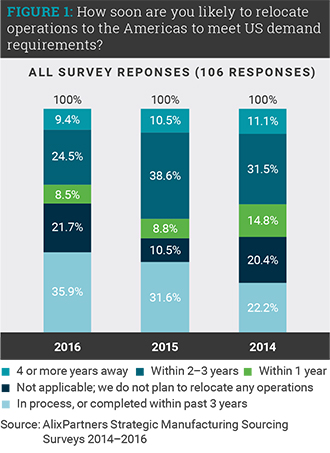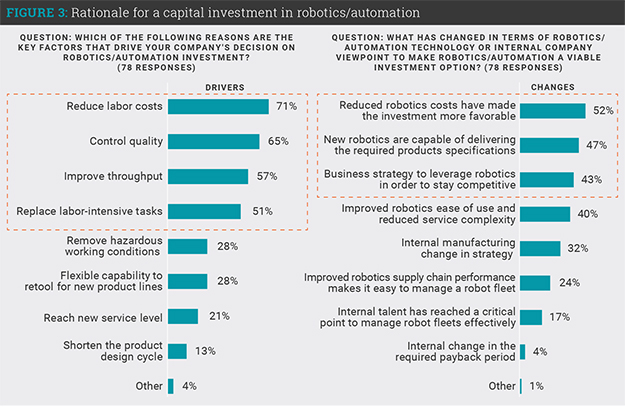In a new “manufacturing outlook” report focusing on the automotive and industrial sectors, AlixPartners observes that many of the labor-cost advantages associated with near-shoring may be lost if companies fail to spend more on automation in the future.
The consultancy notes that automation capabilities have improved dramatically, and implementation expenses have come down. As a consequence this kind of technology can help manufacturers augment—or entirely replace— functions previously performed entirely by humans.
“To exploit those technologies, manufacturers will likely have to make capital-intensive investments,” says Foster Finley, a managing director at AlixPartners in New York. “But they should understand, too, that automation cannot replace a human workforce.”
Instead, adds Finley, automation shifts the focus to a new set of critical skills.
“As automation technology becomes more available and more affordable, companies will have to adopt longer-term views on developing and retaining talent aligned with the tactical use of robotics,” he says.
The survey, which polled manufacturing and distribution companies in the U.S. and Western Europe, finds that 69% of respondents believe near shoring is a possible opportunity to meet demand from consumers, up from 40% in last year's survey.

“This increase in near shoring has led to labor challenges, however,” says Finley. “Many respondents are having a hard time filling roles like product engineers and frontline supervisors.”
Along with these labor issues, two-thirds of respondents said they plan to invest significantly in automation technologies.
“So what we may expect is more spend in human resources with higher salaries and other incentives, at the same time companies will place greater reliance on technology.”

Researchers note that automotive and electronics manufacturers have been the biggest adopters of automation technology thus far. But companies in other sectors—such as pharmaceuticals, instrumentation and measurement devices, medical equipment, and pulp and paper— will likely begin to shift more of their manufacturing capacity to robots in the coming years.
Download the Report: Near Shoring Continues, Labor Becomes a Limiting Factor, and Automation Takes Root
SC
MR


More Automation
- Survey reveals strategies for addressing supply chain, logistics labor shortages
- Six Factors to Consider Before Automating Warehouses
- From Whiteboard to Warehouse: Writing an Effective Warehouse Automation RFP
- 2023 Warehouse/DC Operations Survey: Automating while upping performance
- Fast Tracking ROI: Agile Logistics through Automation, AI, and Optimization
- Generative AI, Robotics and Automation: Supply Chain Friends or Foes?
- More Automation
Latest Podcast

 Explore
Explore
Software & Technology News
- Survey reveals strategies for addressing supply chain, logistics labor shortages
- AI, virtual reality is bringing experiential learning into the modern age
- Humanoid robots’ place in an intralogistics smart robot strategy
- Tips for CIOs to overcome technology talent acquisition troubles
- Game on: Rethinking change management for the digital era
- Predicting stockouts: Enhancing FMCG resilience through data-driven insights
- More Software & Technology
Latest Software & Technology Resources

Subscribe

Supply Chain Management Review delivers the best industry content.

Editors’ Picks





